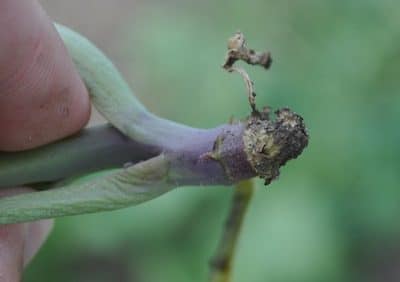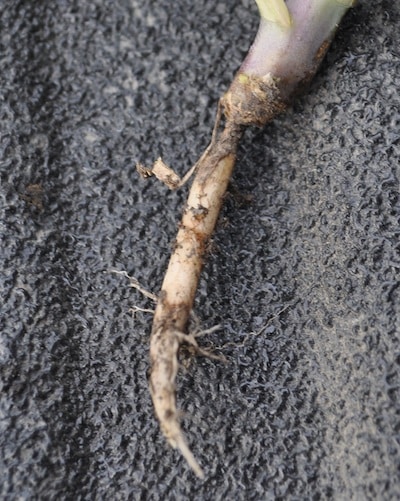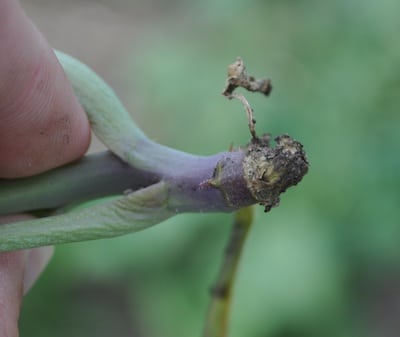
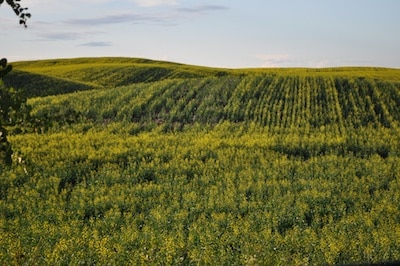
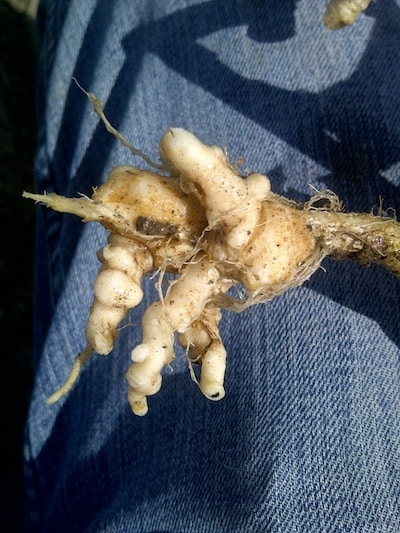
Growers can’t do much to prevent disease at this stage of the season, but scouting and identifying disease is easier in the weeks leading up to harvest. Identifying disease now means growers will be able to take measures to avoid spreading this disease this fall, and makes better management decisions with regard to crop rotation and variety selection for next year.
Sclerotinia stem rot: It could be another big year for this disease. Fields not sprayed may have high rates of infection. Nothing can be done at this point. The most costly infection has set in, and fungicide does not have curative effect. The best you can hope for is dry weather that causes infected leaves to drop before infection spreads to stem. Click here for more on late applications.
Foot rot and brown girdling root rot: Canola plants pinched off at ground level likely have rhizoctonia foot rot. Another possibility is brown girdling root rot (BGRR), a similar infection caused by the complex of rhizoctonia, pythium and fusarium, producing a characteristic brown root. Growers have no management options for this season, but if they’re seeing high rates of disease, note that these diseases can be much higher in tight canola rotations.
Blackleg: Growers in some parts of Manitoba are seeing fairly high incidence of blackleg. Infection that occurred at seedling to rosette stages is what’s causing stem lesions and cankering now. Fungicide applied now will not help these plants, and fungicide applied now would be too late to have any benefit to plants that have not been infected. New blackleg infections at this stage of the season will be superficial and not reduce yield. Assessing how much yield loss will occur based on presence of stem cankers is difficult, but if you see premature ripening over the next week or two, that’s a good sign yield loss will occur.
Clubroot. Above-ground symptoms, including wilting and pre-mature ripening, should be evident soon in severely-infected plants. Even if you don’t see above ground symptoms, pull plants and look for galls. Plants with small galls will not show above ground symptoms, but light or severe infection both have essentially the same risk for spreading the disease with equipment. If galls are present, the best management at this stage is to prevent spread within the field, and certainly from field to field. Harvest those fields last to prevent field to field spread. Consider no-tillage in those fields to prevent spread throughout the field and from field to field by the tillage tool. Click here for more on clubroot. Inspect other weeds that can host clubroot as well, especially in non-canola crops. The most common clubroot-susceptible weed species of the Prairies are wild mustard, stinkweed (a.k.a. French weed or pennycress), flixweed (a.k.a. tansy mustard) and shepherd’s purse. Click here for photos of these weeds and other less susceptible weeds.
